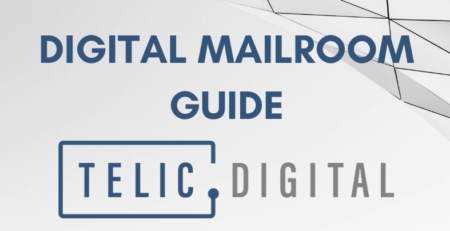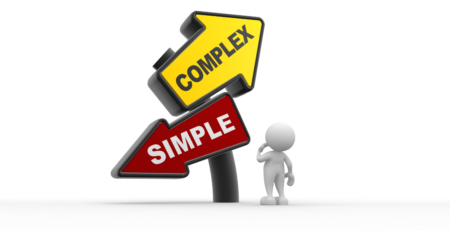2021, the shortest year since 1970. Reclaim time with Cognitive Capture Automation
Admittedly, that’s not a perceivable difference for most people and in real terms will have no impact to businesses and organisations. However, ‘time’ is a very relevant parameter for organisations – how many things fail to happen because there isn’t enough time? how many shortcuts are taken due to lack of time? how much better could a product or service be if there was more time?
Time is a crucial factor in determining ‘productivity – a measure of economic output per hour of work – which in Britain has seen a decline over the last decade. The modern business world is all about chasing productivity gains. It’s a common challenge faced by most organisations – how to do more, for less, at a higher quality. Time is of critical importance in this conundrum.
Where to start
In today’s world, decision makers and business leaders are increasingly provided with computer-generated analysis that would never have been available or possible to collect previously given the scale and complexity of the data. It’s treated as a credible reference, even though some of the processes used to collate that information may be manual, subjective or disjointed.
‘Rubbish in, rubbish out’, an often used, but frequently overlooked piece of advice that applies to business processes. Once bad data enters the process it’s challenging to identify, manage and resolve. So in looking at a business process, the best place to start is often at the beginning. By this, we mean looking at what triggers the process to start in the first place and then making this step as optimal as it can be. In the real world this can mean identifying the email, the letter, the web form or contact centre call and understanding how customers, suppliers or other parties are engaging with an organisation.
We often see that it’s not the majority, the normal 80%+, of standard communications, that arrive in an expected method, in the preferred channel, that cause problems. It’s those which don’t fit the ‘ideal process’ mould, the other 20%. It’s the customer that decides to hand write a complaint letter, a sales order that is received outside of the EDI (Electronic Data Interchange) channel, the supplier that sends invoices in MS Excel format or a locked PDF or the proof of identity poorly captured on a phone. These forms of communication, while not in a preferred channel, are still valid and still need handling. The task of ingesting these documents, and the data contained within them, shouldn’t mean the process is bent to accommodate them. Rather the process should be designed with these in mind.
Think about an insurance claims process. Whilst the insurer may want customers to complete a web form or engage with an online chat agent, that might not suit the customer. It may be that information is received in iterations across different channels. Take a car accident claim where someone is prepared to fill out an online form from a desktop, but then submits photos of the accident separately from a mobile device. The FNOL (first notice of loss) is a critical step for the downstream process and not being able to automatically join these documents up will have service repercussions.
How can Cognitive Capture Automation technology help?
Freeing up employee time from manual and mundane activities by using automation, undoubtedly provides opportunity for better time utilisation. It means processes can operate faster with less human input, reduced costs and improved service levels. It can lead to improvements in employee engagement and ultimately productivity. Cognitive Capture Automation helps organisations to extract relevant data from documents automatically thereby ensuring information is pushed into the right systems in an optimal manner. It sits at the front of the process and is the critical link between inbound communications and subsequent processes.
Without Cognitive Capture
 Without Cognitive Capture Automation, people are the predominant actors on documents and information being received into the process and they provide the critical links between the information being received, an organisation’s processes and its line of business systems.
Without Cognitive Capture Automation, people are the predominant actors on documents and information being received into the process and they provide the critical links between the information being received, an organisation’s processes and its line of business systems.
With Cognitive Capture
 Using Cognitive Capture will allow organisations to ingest information that is being received across multiple channels into a single process that maintains a single set of service levels and business processing rules. This ensures consistency, as well as making subsequent reporting simpler.
Using Cognitive Capture will allow organisations to ingest information that is being received across multiple channels into a single process that maintains a single set of service levels and business processing rules. This ensures consistency, as well as making subsequent reporting simpler.
The machine learning and artificial intelligence engines adapt on a self-learning basis to ever-improve the automation rates and to accommodate new document and data types as they are received. Thereby, saving time from day one, but continuing to add value over an extended period.
Where are you on the Document Capture Maturity Curve?
Before embarking on a capture automation project, its good to consider where the organisation is today and its intended strategic direction.
 The different levels of Capture can be described as follows:
The different levels of Capture can be described as follows:
Departmental Capture – this tends to be use case specific and is best served by a cloud processing solution that is quick to setup and where requirements mean a low level of configuration complexity, e.g. a cloud invoice processing solution for an accounts payable process to automate the extraction of data from invoices.
Enterprise Document Capture – normally more of an organisation-wide approach to capturing multiple document types across many departments in an organisation, e.g. a digital mailroom for a council that serves multiple functions – revenues and benefits, social care, planning, highways etc
Enterprise Electronic Data Capture – where an organisation wants control of not only document ingestion but also other data sources which need extracting, aggregating or validating, e.g. a sales order process that requires automation of document based, physical or digital orders through to those that are received through electronic channels such as EDI.
Digital Transformation – this is where the technology is expanded to provide an end to end digital transformation of a process and the various steps beyond initial capture Typically a process that involves different channels, contributors and multiple exchanges of documentation, e.g. a mortgage application where an application is made, documents may be requested (identity, proof of income etc), an agreement is signed digitally and electronic approval or rejection is made post assessment.
Top Tip: How much is too much Automation?
As with other forms of automation, cognitive capture technology is used to reduce the time that people spend performing tasks as much as possible. Aiming for total automation or 100% touchless processing is rarely a sensible objective. Typically, the most manual, time-consuming and simple to automate tasks get tackled first, and therefore those that remain are more difficult and produce less benefit. The world of ‘diminishing returns’ is summarised neatly in this diagram and certainly a pitfall to avoid.
 Source: PMC Training
Source: PMC Training
For help understanding how cognitive capture technology can give your organisation its time back in 2021, you can contact our team here.











